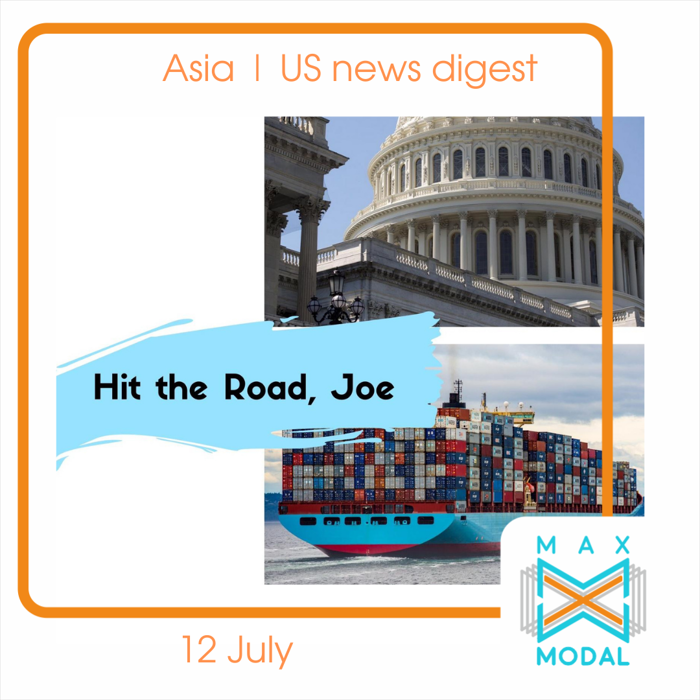Asia | US news digest. 12 July
Shippers fire up their concerns as government becomes more determined to crack down the existing monopoly. A new battle ground has emerged?
As carriers are expected to enjoy rapidly growing profits at least through 2021, anticipating surpassing $100 billion for the year, executive regulations are looming over the horizon. A new order has been signed by Joe Biden amid to crack down on anticompetitive behavior in rail and ocean shipping industries by investigating and punishing unfair conducts. Federal Maritime Commission backs this decision. However, it is uncertain whether the government’s hand can regulate the current situation so easily. In response to the announced initiative, the liner lobby group has voiced its concerns about whether the administration is focused on the right priorities. The group and supporters of the opposite from the president’s opinion believe that the problem is rooted in unprecedented demand that has to be normalized first. Some have also commented that the new regulation is only going to create smoke without fire. It is shaky grounds especially in the light of the existing obstacles. Even if some shippers have managed to negotiate excellent rates with ocean freight carriers, they cannot take a finger off the pulse, as now there is a market trend where carriers are increasingly prioritizing high-paying cargo over contract rates with anyone other than their biggest customers. Meanwhile, the demand that is seen as one of the causes of the current crises is not expected to go down shortly – imports continue to break records. For instance, U.S. ports covered by Global Port Tracker handled 2.33 million TEU in May 2021.
At the same time, ocean freight spot rates have surged over the last week, with average rises close to 5% across the eight major East-West trades. One of the reasons behind the increased numbers is the competition among shippers fighting for “a place in the sun”, cargo slots. Experts note that a large retailer fighting a small retailer in the same line of business could use a freight rate that is $5,000 lower than its competitor even if the larger one is still paying far above what it was paying last year.
Antwerp has become a new pain point, suffering the knock-on effect of terminal and quay congestion. Nevertheless, according to industry players, the overall situation at North Europe’s container hubs is improving. All the recent challenges have proved the importance of port workers who have been working under all these pressuring conditions. While some blame quarantine and the secondary effects of Covid-19 vaccination on workers, together with the upcoming vacation period leading to further disruptions, others argue that dockers should never be considered a problem.
If the situation with Belarus becomes more perplexed, the Zamość terminal near the Polish-Ukrainian border can become a possible alternative for Europe-China trains. It is to be expanded to respond to the growing number of trains passing through this border. The station is considered valuable for trains on the New Silk Road and rail transport within Europe.
The transpacific tradelane has gained a new player – China United Lines with service out of Shanghai to Los Angeles with five chartered ships. The decision is motivated by the government’s request to add more capacity to long-haul routes.
Levi’s shifts its cargo volumes due to supply chain disruptors. The company now shipping most of its products through the U.S. East Coast amid prolonged delays and struggles in Long Beach. The decision to divert freight was one of many actions Levi's supply chain team to mitigate risk.
A collision of the Ultra Large Container Vessel operated by Ocean Network Express has occurred with a bulk carrier in the Straits of Malacca on 11 July. Nobody was hurt; however, the details are still being investigated.

